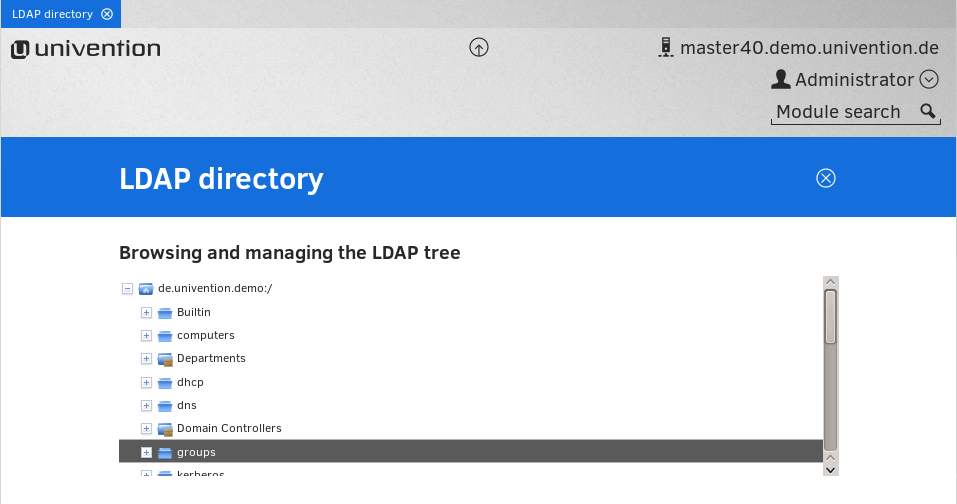Fail-safe performance and load distribution thanks to LDAP replication

Even if you only have a small number of staff, the administration of individual user accounts for numerous applications and the corresponding access rights can still prove very time consuming. When responsibilities change hands or when new members of staff join the company at the latest, the IT infrastructure becomes characterized by uncontrolled growth, which not only requires a lot of time to handle, but also becomes more and more insecure over time. More often than not, the administration of the users and their rights gets neglected at some point. As the enterprise expands, this type of out-of-control infrastructure becomes more and more risky and dangerous. Centralized user management in the form of an identity management system can help you to rein your IT back in again.
The beating heart of an identity management system is often a so-called LDAP directory service, which is also integrated in our Univention Corporate Server. LDAP stands for lightweight directory access protocol, so it really only describes the protocol itself, although people also tend to talk about “the LDAP” when they actually mean the LDAP directory service.



 As manager of Univention North America, I often find myself working on the go. While free WiFi and mobile Internet are slowly bridging the gap between the office, airport lounges and hotels, connections are often slow and congested whenever many people are congregating.
As manager of Univention North America, I often find myself working on the go. While free WiFi and mobile Internet are slowly bridging the gap between the office, airport lounges and hotels, connections are often slow and congested whenever many people are congregating.
 When I started at Univention’s Professional Services in Germany, one of the questions I was asked was “Where do you see yourself in 5 years?”. Being prepared for the interview, my answer was a mixture of showing my idea of working with customers, my understanding of the technologies of UCS as well as my personal goals and dreams. Looking back to my answers in our HR folder, I have to admit that life has taken many turns that I didn’t plan for. Today, I’m no longer working in Professional Services. For a bit over a year, I’ve been Univention’s North American Operations dealing not only with technical projects but also with Sales, PR and Management as a whole.
When I started at Univention’s Professional Services in Germany, one of the questions I was asked was “Where do you see yourself in 5 years?”. Being prepared for the interview, my answer was a mixture of showing my idea of working with customers, my understanding of the technologies of UCS as well as my personal goals and dreams. Looking back to my answers in our HR folder, I have to admit that life has taken many turns that I didn’t plan for. Today, I’m no longer working in Professional Services. For a bit over a year, I’ve been Univention’s North American Operations dealing not only with technical projects but also with Sales, PR and Management as a whole.